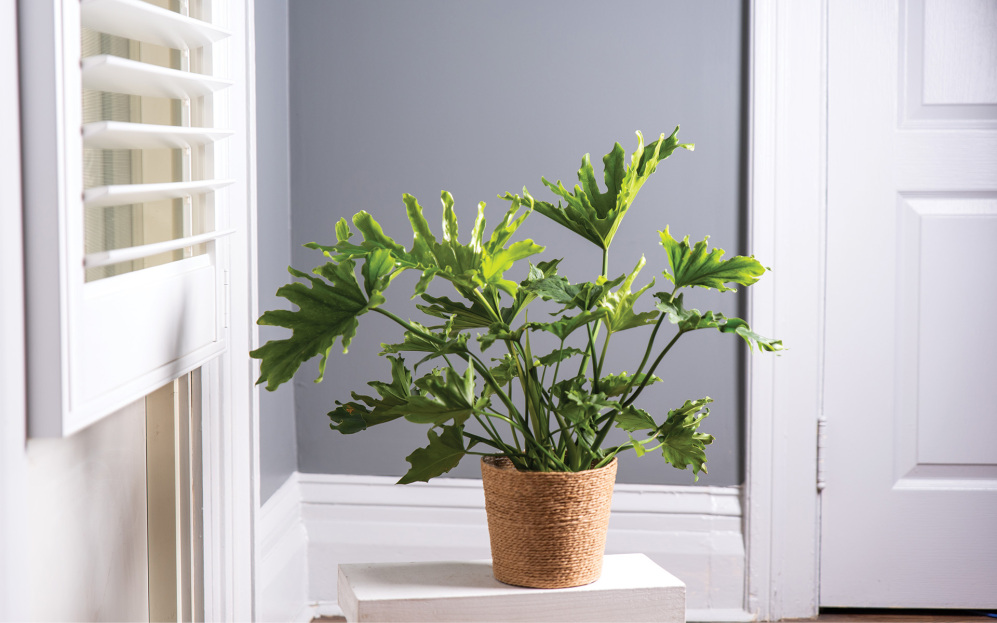
If you're looking to add a touch of greenery to your home or office space, look no further than the resilient and beautiful Philodendron Hope. In this guide, we'll cover everything you need to know to ensure your Philodendron Hope thrives!
The Philodendron Hope, scientifically known as Philodendron bipinnatifidum, is a member of the Araceae family and is native to the tropical regions of South America. It's characterized by its large, glossy, deeply lobed leaves that can grow up to three feet long, giving it a dramatic and striking appearance. Despite its size, the Philodendron Hope is relatively easy to care for, making it an ideal choice for indoor spaces.
One of the key factors in caring for a Philodendron Hope is providing it with the right amount of light. While it can tolerate low light conditions, it thrives in bright, indirect sunlight. Place your plant near a window where it can receive plenty of natural light without being exposed to direct sunlight, which can scorch its leaves. If you notice the leaves becoming pale or leggy, it may be an indication that the plant isn't receiving enough light.
Proper Watering is crucial for the well-being of your Philodendron Hope. Ensure the top inch of soil is completely dry before watering, Avoid letting the plant remain in water, as it could cause the roots to rot. When watering into a pot without drainage holes, be sure to discard any excess water. In the winter months when the plant is dormant, you can reduce the frequency of watering to prevent overwatering.
Philodendron Hope thrive in humid environments due to their tropical nature. While they can adapt to lower humidity levels, they will benefit from occasional misting or placement near a humidifier, especially during the drier winter months. You can also place a tray filled with pebbles and water beneath the plant to increase humidity around it if necessary.
Maintaining a consistent temperature between 65°F to 80°F (18°C to 27°C) is ideal for Philodendron Hopes. Avoid placing them near drafts or heating vents, as sudden temperature fluctuations can stress the plant. Additionally, providing adequate airflow around the plant will help prevent pests and diseases.
When you're planting your Philodendron Hope, opt for a potting soil that drains well but still holds moisture without getting overly saturated. A mixture of peat moss, perlite, and potting soil works well. Repot your plant every two to three years or when it outgrows its current pot, typically in the spring or early summer.
Regular pruning is key to keeping your Philodendron Hope looking its best. Trim away any dead or yellowing leaves to encourage new growth and maintain the plant's overall health. You can also propagate new plants from stem cuttings taken during pruning.
Use a balanced liquid or slow-release fertilizer, such as a 10-10-10 or 20-20-20 formula, diluted to half strength. Feed the plant every 4–6 weeks during the active growing season in spring and summer, when it produces new leaves and requires extra nutrients. Avoid over-fertilizing, as this can lead to root burn and brown leaf tips. During the fall and winter months, reduce fertilization to once every 2–3 months or stop entirely, as the plant's growth slows. Always water the plant before fertilizing to prevent nutrient buildup in the soil. For optimal results, you can also use an organic fertilizer or one rich in nitrogen to enhance its leaf production and overall health.
While Philodendron Hope is relatively pest-resistant, they can occasionally attract pests such as aphids, spider mites, and mealybugs. Regulary Inspect your plant for of pests, and treat any infestations promptly with insecticidal soap or neem oil.
To propagate a Philodendron, take a stem cutting just below a node with at least one leaf. Remove the lower leaves and either place the cutting in water, ensuring the node is submerged, or plant it directly in well-draining soil.
Keep the cutting in a spot with bright, indirect light and change the water every few days if using the water method. Roots should develop within 2-6 weeks.
For division, carefully remove the plant from its pot, separate sections with their own roots, and repot them individually. Keep the new plants in a warm, humid area and water lightly.
No the Philodendron is considered toxic to pets according to the ASPCA.